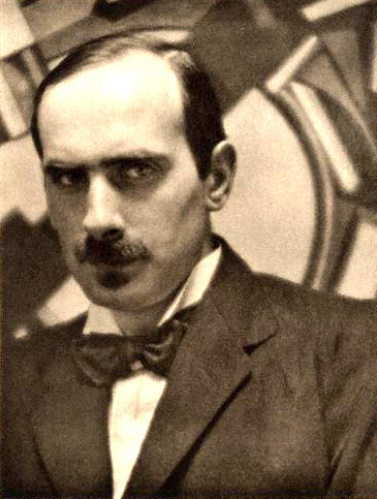Edward Alexander Wadsworth – Artist
 Edward Alexander Wadsworth was an English artist and a founding member of the Vorticism movement which favored harsh, angular, machine-like forms. His paintings, often in tempera, included coastal views, abstracts, portraits and still-lifes. Wadsworth also did engravings on wood and copper. During the First World War he was involved in transferring dazzle camouflage designs onto ships for the Royal Navy in which a pattern of disjointed lines intended to prevent U-Boats from determining the direction and speed of travel of British battleships.
Edward Alexander Wadsworth was an English artist and a founding member of the Vorticism movement which favored harsh, angular, machine-like forms. His paintings, often in tempera, included coastal views, abstracts, portraits and still-lifes. Wadsworth also did engravings on wood and copper. During the First World War he was involved in transferring dazzle camouflage designs onto ships for the Royal Navy in which a pattern of disjointed lines intended to prevent U-Boats from determining the direction and speed of travel of British battleships.
Wadsworth was greatly inspired by the industrial landscape found in West Yorkshire, familiar from his childhood. Works such as “Yorkshire Village” were abstract, recalling early Cubist landscapes by Picasso and Braque. Wadsworth simplified his composition capturing architectural details such as factories and buildings. By combining different colors he was able to explore additional compositions while maintaining the severe quality he sought with his woodcuts. On the border of the woodcut, Yorkshire Village, he wrote the word “Heptonstall” which refers to the West Yorkshire town that should be familiar with all Wadsworth family genealogists.
Towards the end of his life he often painted maritime subjects, developing a distinctive type of highly composed marine still life, typically in a Surrealistic style.
Wadsworth was educated at Fettes College, Edinburgh, before studying engineering in Munich from 1906 until 1907. While there he studied art in his free time at the Knirr School, but soon gave up engineering to concentrate entirely on his art, attending the Bradford School of Art and the Slade School in London.

Christopher Wadsworth a great great great etc etc grandfather of mine
Greg wadsworth